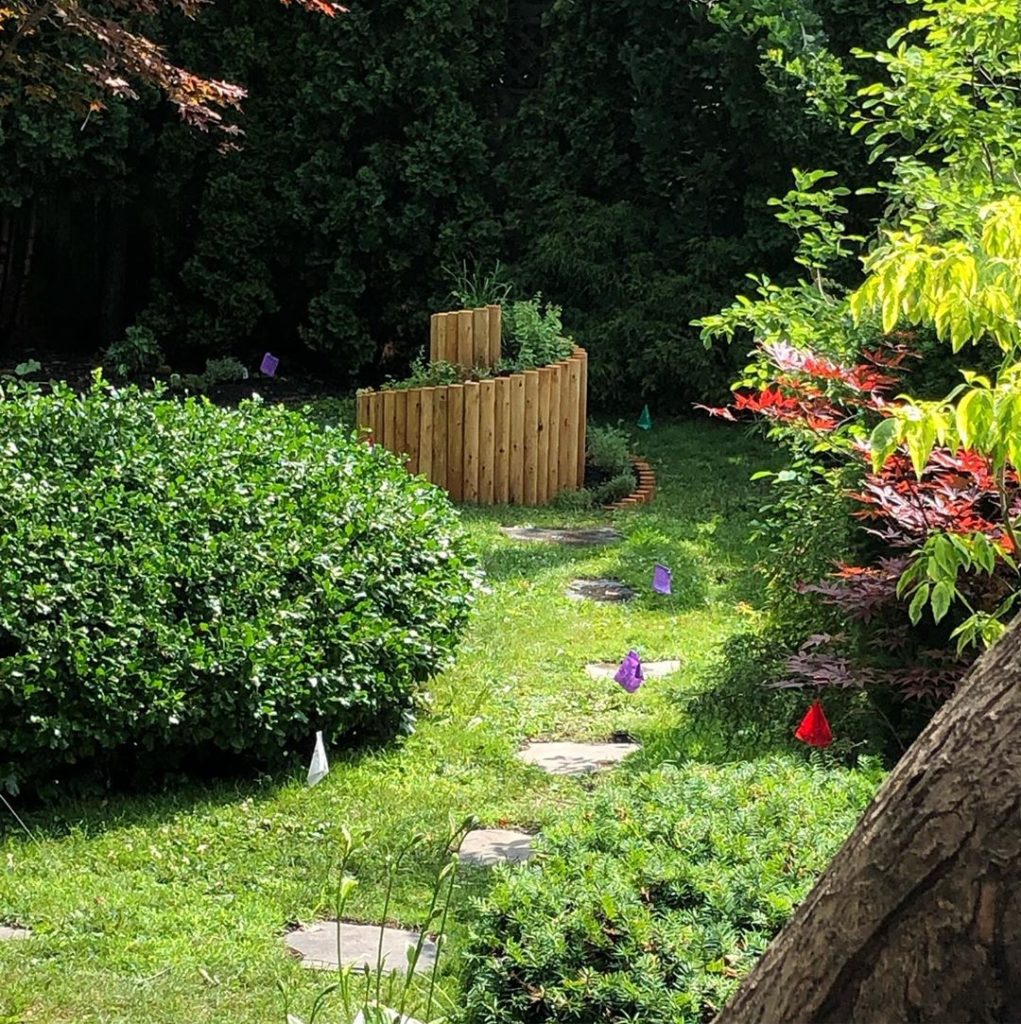A Client Inspired Product
Last month one of BUFCO’s long-standing Toronto clients had us design and implement a landscape that is beyond our usual comfort zone. The work took us happily and excitedly down a new path. We removed an array of large, well established ornamental shrubs and established three new gardens – annual edibles, perennial edibles, and perennial pollinator flowers. We also laid a flagstone patio and stepping stone path that led to a beautiful Herb Spiral that has since become the latest addition to the BUFCO product offerings.

Spirals are found throughout nature, from the microscopically small DNA strand to the unimaginable expanse of a galaxy. Snails, sea shells, leaf and seed patterns, insects, hurricanes and tornadoes, whirlpools… Once you see it, it’s near impossible to un-see.
Measuring 5’ at its widest, the herb spiral is made with three-inch Eastern White Cedar dowels – a locally harvested and rot resistant wood. It’s 36” tall in the middle with a planting path that is twelve inches wide. It can also be made with our Square Post style wood.
There is actually some pretty heavy-duty math involved in the spatial relationships within a spiral. The Golden Ratio (a.k.a. the Golden Number, a.k.a. the Golden Mean, a.k.a. The Golden Section, and most commonly known as Pi, used possibly as early as 2550 BC), and the Fibonacci Sequence (from around 1200 AD) are two mathematical rules that numerically inclined readers might want to look up. Even the mathematically challenged (like Yours Truly) would find a brief reading fascinating in the exacting and calculable precision of spiral patterns in nature.
Bottom line is, it’s an extremely pleasing shape, and makes a wonderful addition to a front or backyard landscape.
We are thrilled to introduce the BUFCO Herb Spiral. This too can be yours! Please contact us for more information.
Comments (3)
Comments are closed.

It’s not as easy as it might look, Alexandre. This installation had to be excavated to more than 3′ deep, and each log had to be custom cut to length, adding 1/2″ per log. Figuring out the pattern took some doing as well. There are easier ways to install a spiral without digging. Use rocks or bricks that rest on the ground to create your spiral shape. It won’t be as sturdy, but will result in the same fascinating shape!
This is beautiful and, I believe, the solution I may be looking for to install a herb spiral in our school garden. Although I have installed beautiful herb spirals with bricks in the past, bricks are too inviting for a would-be vandal.
Can you please describe how the posts were installed? Are they connected to one another or simply dug into the soil? If you excavated more than 3′ deep as you mention in the discussion above, does each post extend an additional 3′ below surface?
Thank you!
Hi Heather – thank you for your comments and for visiting our blog.
Posts are connected to one another with 5″ screws. Each post is 3′ long below the grade, plus whatever length of wood is exposed. Each piece was custom cut, adding 1/2″ to each post.
Hope that helps!